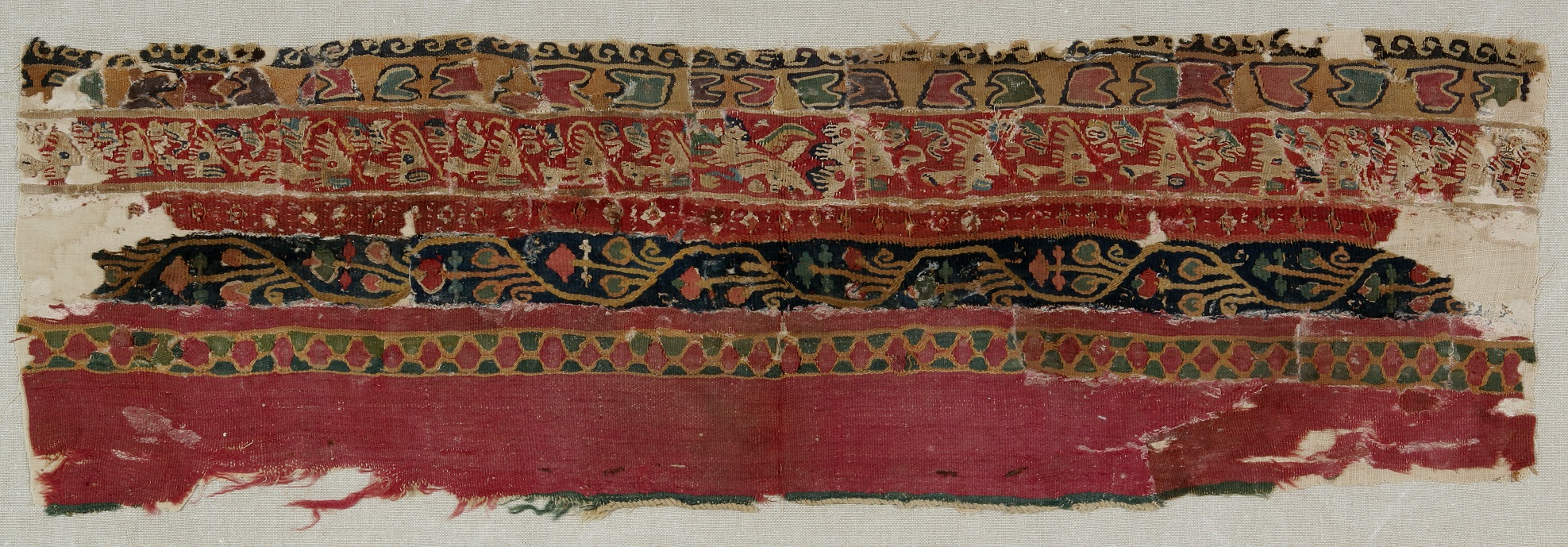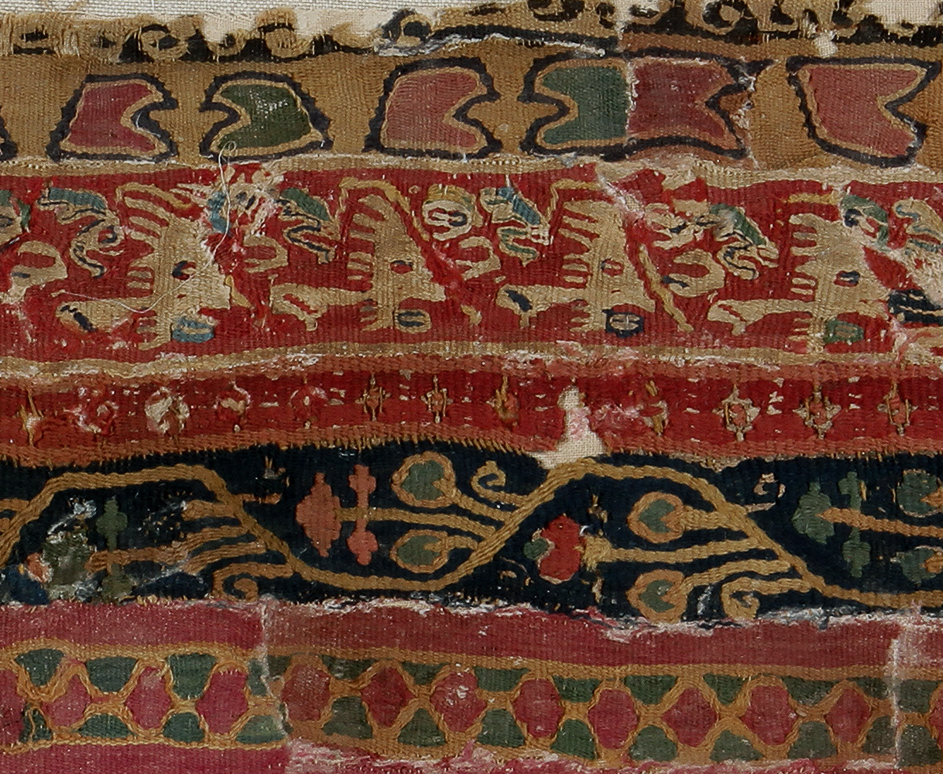This textile is composed of fragments that have probably been put together in modern times. From top to bottom: a line of black waves; a frieze of green, red and brown motifs on a yellow ground; a band of putti and stylised sea creatures on a red ground; a frieze of ecru lozenges on a red ground; plant interlace on a dark blue ground and a wide red band with amorphous motifs.
Origin:
Egypt
Date:
6th - 8th century
Material:
Linen and wool
Dimensions:
62 x 19 cm
Provenance:
Collection Coptic textiles Fill-Trevisiol: donation
Location:
Musée royal de Mariemont
Assembled woollen tapestries
I. Ground weave
(1) Band 1: ground weave
(2) Band 2: Floral motifs on blue background
(3) Band 3: Animal and human figures on red background
(4) Band 4: Amorphous motifs on yellow-orange background
Warp:
(1) yellow wool S: 10/cm
Weft:
(1) green and red wool S: 38/cm
Weave:
(1) weft-faced tabby
II. Tapestry areas
(1) Band 1
(2) Band 2
(3) Band 3
(4) Band 4
Warp:
(1) yellow wool S: 10/cm
(2) yellow wool S: 7/cm
(3) natural-coloured wool S: 11/cm
(4) yellow wool S: 11/cm
Weft:
(1) yellow, green and red wool S: 38/cm
(2) blue, red, yellow, orange, pink and green wool S: +/- 40/cm
(3) blue, red, yellow and green wool S: +/- 40/cm; natural-coloured linen: +/- 55/cm
(4) yellow, orange, blue-black, red, green, purple and natural-coloured wool S: +/- 38/c
Weave:
(1-4) weft-faced tabby
Special techniques:
(1-4) slit tapestry, eccentric weft

